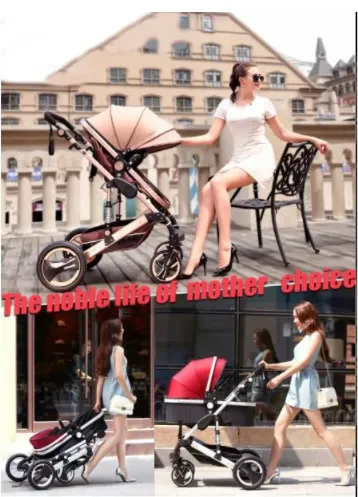
- Afrikaans
- Albanian
- Amharic
- Arabic
- Armenian
- Azerbaijani
- Basque
- Belarusian
- Bengali
- Bosnian
- Bulgarian
- Catalan
- Cebuano
- Corsican
- Croatian
- Czech
- Danish
- Dutch
- English
- Esperanto
- Estonian
- Finnish
- French
- Frisian
- Galician
- Georgian
- German
- Greek
- Gujarati
- Haitian Creole
- hausa
- hawaiian
- Hebrew
- Hindi
- Miao
- Hungarian
- Icelandic
- igbo
- Indonesian
- irish
- Italian
- Japanese
- Javanese
- Kannada
- kazakh
- Khmer
- Rwandese
- Korean
- Kurdish
- Kyrgyz
- Lao
- Latin
- Latvian
- Lithuanian
- Luxembourgish
- Macedonian
- Malgashi
- Malay
- Malayalam
- Maltese
- Maori
- Marathi
- Mongolian
- Myanmar
- Nepali
- Norwegian
- Norwegian
- Occitan
- Pashto
- Persian
- Polish
- Portuguese
- Punjabi
- Romanian
- Russian
- Samoan
- Scottish Gaelic
- Serbian
- Sesotho
- Shona
- Sindhi
- Sinhala
- Slovak
- Slovenian
- Somali
- Spanish
- Sundanese
- Swahili
- Swedish
- Tagalog
- Tajik
- Tamil
- Tatar
- Telugu
- Thai
- Turkish
- Turkmen
- Ukrainian
- Urdu
- Uighur
- Uzbek
- Vietnamese
- Welsh
- Bantu
- Yiddish
- Yoruba
- Zulu
Nov . 09, 2024 03:35 Back to list
Balancing System for Two-Wheeled Vehicles Enhancing Stability and Performance
The Marvel of Two-Wheel Balance Cars
In the realm of personal transportation, two-wheel balance cars, often known as self-balancing vehicles or hoverboards, have surged in popularity. A fascinating invention merging cutting-edge technology and innovative design, these vehicles offer a glimpse into the future of urban mobility. This article explores the mechanics, benefits, challenges, and future of two-wheel balance cars, illuminating their role in transforming how we navigate our cities.
The Mechanics of Two-Wheel Balance Cars
At the heart of two-wheel balance cars is advanced gyroscopic technology coupled with motion sensors. These vehicles utilize a system of accelerometers and gyroscopes to detect the rider's body movements. When a rider leans forward, the sensors interpret this motion and instruct the motors to propel the vehicle forward. Similarly, leaning back slows the vehicle. The real magic lies in the ability to maintain balance; as the rider shifts their weight, the vehicle responds almost instantaneously, providing a seamless riding experience.
Most designs are minimalistic, consisting of two wheels positioned on either side of a foot platform. This configuration allows for a compact size, enhancing maneuverability in crowded urban environments. Powered by rechargeable batteries, these vehicles can travel significant distances—usually between 10-20 miles on a single charge—making them a practical option for short commutes or leisurely rides.
Benefits of Two-Wheel Balance Cars
The advantages of two-wheel balance cars are numerous. Firstly, they represent an eco-friendly alternative to traditional gasoline-powered vehicles. With zero emissions, these electric rides contribute to reducing the carbon footprint associated with urban commuting. Additionally, the compact nature of these vehicles means they require less space for parking, easing congestion in busy cities.
Moreover, riding a two-wheel balance car promotes physical activity. While riders are not engaged in rigorous exercise, maintaining balance and maneuvering through traffic can enhance coordination and core strength. Furthermore, these vehicles are typically easier to use than bicycles, making them accessible to a wider range of people, including those who may have difficulty riding a bike.
two wheel balance car

Challenges Facing Two-Wheel Balance Cars
Despite their advantages, two-wheel balance cars face several challenges. Road safety is a major concern; incidents involving these vehicles can occur due to the lack of protective gear and the potential for accidents in heavy traffic. Riders are often encouraged to wear helmets and pads, yet the absence of stringent regulations means that many do not prioritize safety.
Additionally, the industry grapples with questions surrounding quality control and sustainability. Various manufacturers produce hoverboards, leading to concerns over product safety. Some devices have been known to catch fire due to subpar battery quality, which has led to recalls and heightened consumer awareness. Ensuring that devices are made from durable materials and meet safety standards is crucial for public trust and long-term viability.
The Future of Two-Wheel Balance Cars
Looking ahead, the future of two-wheel balance cars seems promising. As technology advances, we can expect improvements in battery life, safety features, and overall design. Smart connectivity may also play a role in their evolution, where riders can track performance, receive maintenance alerts, and even navigate through integrated GPS systems.
Cities around the world are beginning to adapt to the growing presence of these vehicles. Dedicated lanes for electric scooters and hoverboards are becoming increasingly common, promoting safer travel and encouraging more people to give them a try. As urban areas continue to explore sustainable transportation options, two-wheel balance cars are poised to become an integral part of the solution.
In conclusion, two-wheel balance cars embody innovation and potential within urban transportation. While they offer numerous benefits, challenges remain that must be addressed to ensure rider safety and product reliability. As we continue transitioning toward greener and more efficient modes of transport, these vehicles will undoubtedly play a significant role in shaping the future of mobility. With ongoing advancements, we can look forward to a world where navigating bustling streets becomes easier, more enjoyable, and significantly more sustainable.
-
The Ultimate Kids' Four-Wheeler Experience
NewsJul.09,2025
-
The Ultimate Guide to Mountain Bikes: Gear Up for Your Ride
NewsJul.09,2025
-
The New Age of Cycling: Electric Bikes for Every Rider
NewsJul.09,2025
-
The Best Kids Bicycles: Ride in Style and Safety
NewsJul.09,2025
-
The Best 3-Wheel Scooters for Kids: Fun, Safety, and Adventure
NewsJul.09,2025
-
Revolutionize Your Ride: Affordable Electric Bikes
NewsJul.09,2025
-
Finding the Perfect Mountain Bike for Every Rider
NewsJul.09,2025



